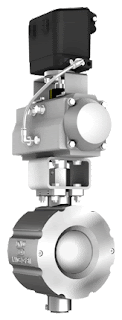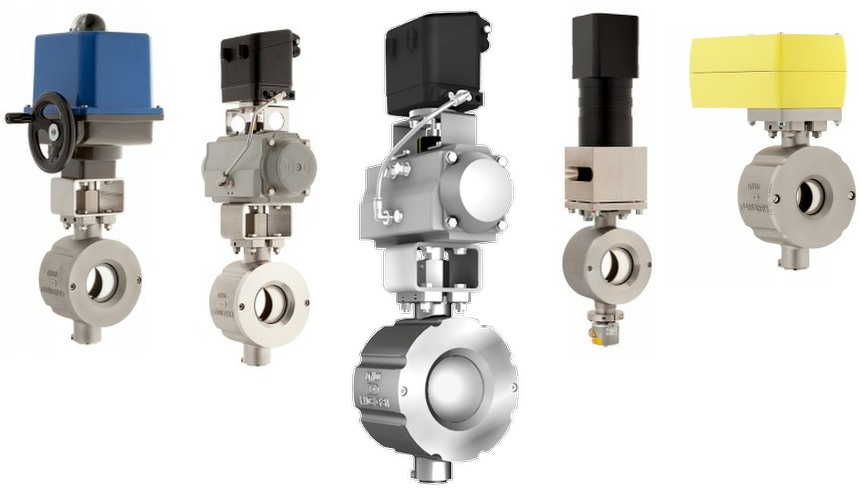The manufacturers of valves and other fluid control components for the processing industries have never been shy about tweaking designs to deliver better performance for a particular set of operating conditions. The available basic valve designs, along with their variants, create an immense catalog of potential candidates for each application.
One such design variant is the ball sector valve. It is a quarter-turn valve, like its cousin the ball valve, but the trim is different. True to its name, the active closure structure is but a portion of what we know of as a common ball valve. Where a ball valve essentially has a sphere with a hole drilled through it, a ball sector valve more resembles a section of a hollowed-out sphere with a shaped opening on the surface.
 |
| Ball sector valve is a quarter turn valve. Image courtesy Schubert & Salzer |
The closure in a ball valve can be floating or trunnion mounted. A ball sector valve will have a trunnion-style mounted closure, with rigid support at the top and bottom. Ball valves, with their rotating fluid pathway resembling a short tube, are generally not the best option for flow control other than isolation. The ball sector valve functions similarly to a sliding gate valve, providing an increasing or decreasing elliptical-shaped opening as the shaft is turned.
Ball sector valves are well suited for applications involving the isolation or control of viscous fluids, slurries, and other challenging fluids. Because of the construction and centric trunnion mounting, the seal area on the ball sector valve is kept free of the media, leading to reduced wear and superior longevity.
There are some good cutaway illustrations in the brochure included below that detail the valve construction. Share your fluid control challenges of all types with valve specialists, leveraging your own process knowledge and experience with their product application expertise to develop an effective solution.
